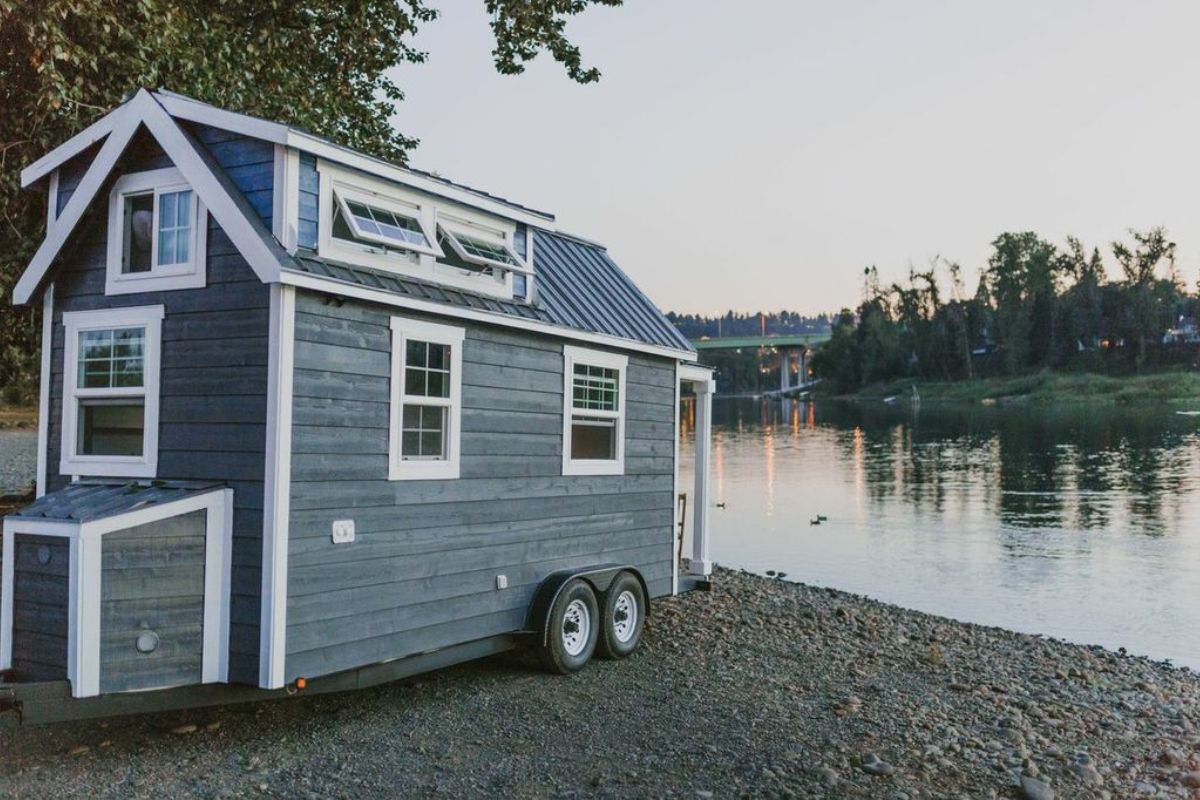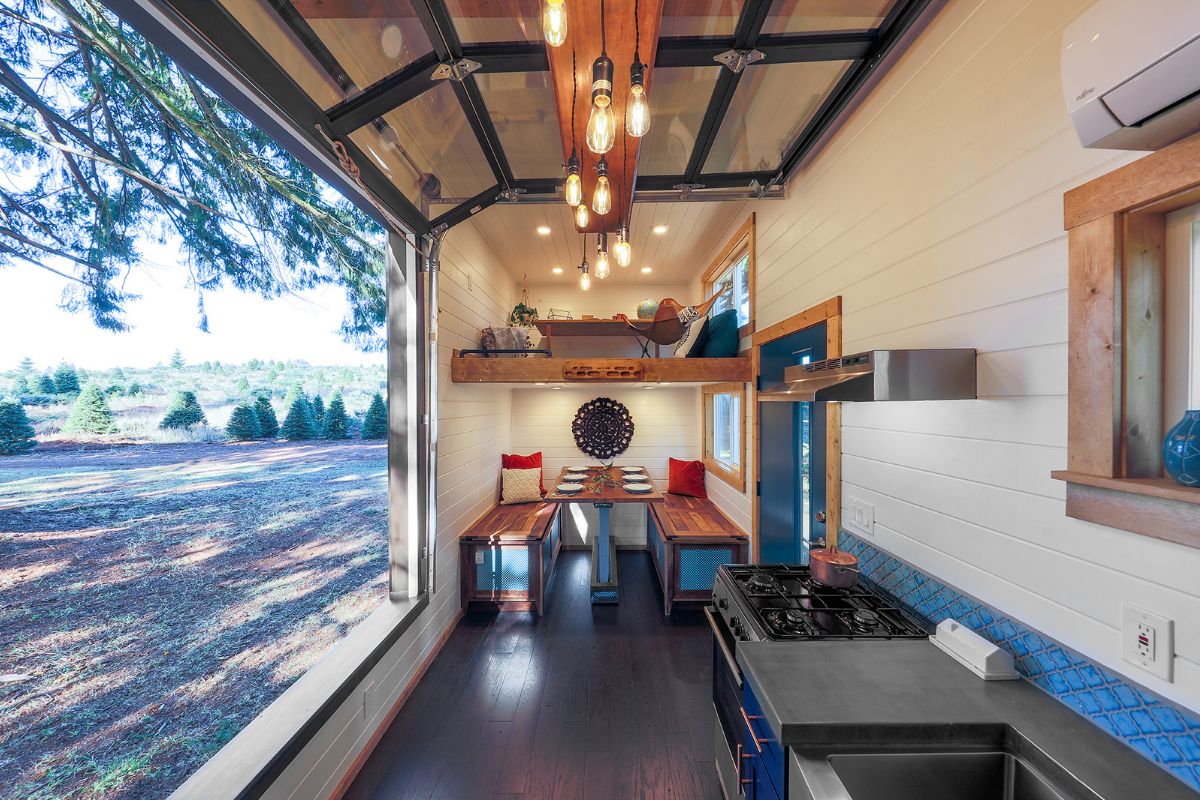When weighing whether to buy or build your tiny house, consider that buying can range from $30,000 to over $100,000, while building costs generally fall between $10,000 and $35,000 for materials alone. You'll also need to account for labor, which starts at $20,000, and additional expenses for tools, permits, and inspections.
Buying a pre-built home often includes compliance with building codes and immediate move-in advantages, but with higher overall costs and limited customization. Building allows for personalization and potentially lower initial expenses but requires a significant investment of time and effort. Understanding these financial layers can better equip you to make an informed decision that suits your budget and lifestyle.
Initial Costs: Buying a Tiny House
When considering the purchase of a tiny house, one of the foremost considerations is the initial cost. You'll find that buying a pre-built tiny house generally involves a straightforward transaction. However, the price can vary considerably depending on factors such as size, location, and customization.
First, consider the size. Smaller models can be as cost-effective as $30,000, while larger, more luxurious ones might push past $100,000. Location plays a vital role too. A tiny house in a high-demand urban area typically costs more than one in a rural setting. Additionally, transport costs must be factored in if the house isn't already situated on your desired site.
Customization is another key aspect. Standard models come cheaper, but if you're opting for custom-built features like solar panels, compost toilets, or high-end finishes, the price will increase. You should also consider the legal landscape, which varies by region. Some areas require specific building codes or zoning laws compliance, potentially adding more to your initial expenses.

In your analysis, weigh these factors carefully. Each contributes to the overall cost and should align with your budget and lifestyle needs. Remember, the goal is to make a well-informed investment, not just a minimal initial outlay.
Initial Costs: Building a Tiny House
Building your own tiny house often presents a different set of initial costs compared to purchasing one pre-built. When you decide to build, the most important expense you'll face is the cost of materials. These can vary widely based on the quality and source. You're looking at spending anywhere from $10,000 to $35,000 for materials alone.
Next, consider the cost of tools and equipment. If you don't already own what you need, you could either purchase or rent. Renting might reduce your upfront costs, but buying provides long-term access for future projects or repairs. This expense can range from a few hundred to a couple of thousand dollars, depending on the complexity of your build and your commitment to quality.
Labor costs are another factor if you're not going the DIY route. Hiring skilled labor will greatly increase your initial outlay. However, this guarantees professional handling and potentially quicker completion. Labor costs can vary greatly, typically starting at $20,000 and can exceed this based on the intricacy of your design and the region's wage rates.
Lastly, don't forget permits and inspections. Required by most municipalities, these can add a few thousand dollars to your initial budget, ensuring your tiny house complies with local codes and regulations.
Long-Term Financial Considerations
Shifting focus to long-term financial considerations, you must evaluate ongoing expenses such as maintenance, upgrades, and utility costs. Maintenance is inevitable, regardless of whether you build or buy your tiny house. However, if you've built your home, understanding the quality and availability of your building materials can help you anticipate future costs. Materials that are more durable may have higher upfront costs but can reduce maintenance expenses in the long run.
Utility costs can vary considerably based on your tiny house's design and location. For instance, if you've included high-efficiency appliances and well-insulated walls, you'll likely see lower heating and cooling expenses. Additionally, the decision to install solar panels or other renewable energy sources can impact your long-term energy costs, potentially yielding considerable savings over time.
Upgrades are another consideration. As your needs evolve, you may find that your tiny house requires modifications. These can range from simple aesthetic changes to major structural renovations. It's wise to set aside a fund for such upgrades to avoid financial strain.

Pros and Cons of Buying
Exploring the option of buying a tiny house presents a mix of advantages and challenges that require careful evaluation. On the plus side, you're looking at convenience. Buying a pre-built tiny house means you don't have to deal with the intricacies and potential delays of the construction process. You can move in much sooner, and the house is likely to meet specific building codes, which reduces your risk of compliance issues.
However, there are downsides. You might find the cost higher than building one yourself. Pre-built tiny houses, especially those with custom features or from high-end builders, can carry a hefty price tag. You're also limited to the designs available on the market, which might not meet all your specific needs or taste. If you're someone who values customization, this could be a significant drawback.
Moreover, you need to evaluate the resale value. While tiny houses can be a great investment, the resale market for them is less established than for traditional homes. This might affect the liquidity of your investment. You'll need to weigh these factors carefully to decide if buying is the right move for you.

Pros and Cons of Building
Many people find that constructing their own tiny house offers significant advantages, particularly regarding customization and cost savings. You have the freedom to tailor every aspect of your home to fit your specific needs and preferences.
From the layout to the materials used, you're in control, ensuring that your space reflects your lifestyle perfectly. Additionally, building usually costs less than buying a pre-made model, especially if you're able to perform some of the labor yourself.
However, building a tiny house isn't without its challenges. It demands a significant amount of time and effort. You'll need to research and possibly learn new skills, such as basic carpentry or plumbing. Furthermore, managing the construction process, from securing permits to sourcing materials, can be intimidating and time-consuming.
There's also the risk of unexpected costs. Budget overruns can occur due to changes in material prices, mistakes during construction, or unforeseen requirements in building codes. It's essential to plan meticulously and allow for a contingency budget.
Conclusion
Ultimately, whether you buy or build your tiny house, you're making a significant financial decision. Purchasing a tiny house offers quicker, easier access but often at a higher cost and less customization. Building one, while potentially cheaper, demands more time and expertise but rewards you with tailor-made features.
Consider your budget, time constraints, and personal skills closely. Your choice should align with not only your financial goals but also your long-term living needs and preferences.






Share: